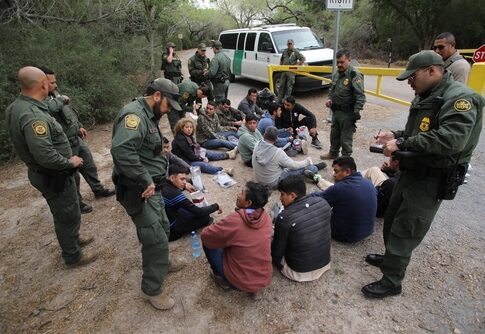U.S. troops have made their first detentions of illegal immigrants in newly designated military zones along the southern border. The controversial policy represents a significant escalation in the administration’s approach to border enforcement, granting military personnel expanded powers. What are some of the benefits of these military zones?
Military Zones Established as Border Defense Strategy
In a significant shift in border security tactics, Defense Secretary Pete Hegseth has designated approximately 260 miles along the Texas and New Mexico border as U.S. military installations. This strategic designation effectively converts these border sections into extensions of Army bases, granting military personnel expanded authority to operate in these areas.
The newly established military zones represent a fundamental change in how border security is managed, with U.S. Northern Command authorizing troops to “conduct installation security support operations.” Military personnel are now empowered to temporarily detain trespassers and conduct cursory searches to ensure safety within these designated National Defense Areas.
. @SecDef “You’re standing on a national defense area. This may as well be a military base inside the United States of America…
Any illegal that attempts to enter this zone is entering a MILITARY BASE. A federally protected area…
YOU WILL BE DETAINED.” pic.twitter.com/pZC0quabQh
— DOD Rapid Response (@DODResponse) April 25, 2025
First Military Detentions Mark Policy Implementation
On June 3, U.S. Army troops made their first detentions of illegal immigrants in the newly established military zones, apprehending three individuals near Santa Teresa, New Mexico. Major Geoffrey Carmichael confirmed the significance of the operation, stating, “This marks the first time Department of Defense personnel have recorded a temporary detainment within either National Defense Area.”
The detained individuals were promptly transferred to U.S. Border Patrol custody, following the established protocol for these military operations. This coordinated handoff demonstrates the intended working relationship between military personnel and traditional border enforcement agencies under the new policy.
🚨 BREAKING: TRUMP JUST TURNED THE BORDER INTO A MILITARY ZONE 🚨
The game has changed.
President Trump has just authorized the U.S. MILITARY to take control of federal land along the southern border.
→ 60 feet wide.
→ Stretching across California, Arizona & New Mexico.
→… pic.twitter.com/DJt2IsVvUh— Jim Ferguson (@JimFergusonUK) April 12, 2025
Expanded Military Role in Border Security
While the detention authority represents a new capability, troops deployed to these military zones have already been actively engaged in border surveillance operations. Military personnel have detected approximately 390 illegal border crossings in these designated areas, primarily focusing on detection and tracking activities.
U.S. Northern Command has clearly defined the parameters of military authority in these zones, which include the ability to “temporarily detain trespassers on the NMNDA until an appropriate law enforcement entity can assume custody.” This delegation of authority represents a significant expansion of the military’s role in domestic border security operations while maintaining the ultimate law enforcement responsibility with civilian agencies.

